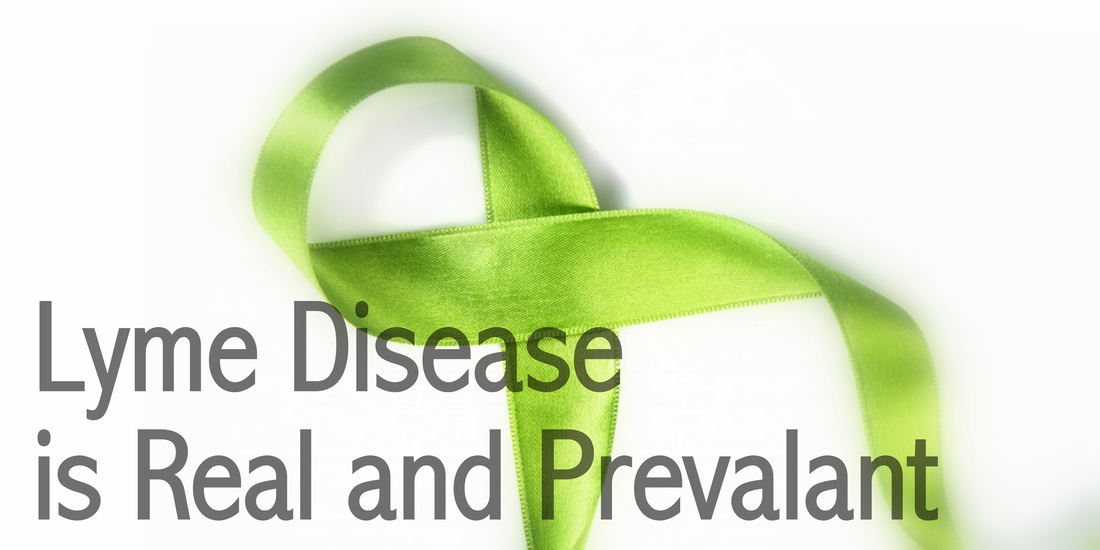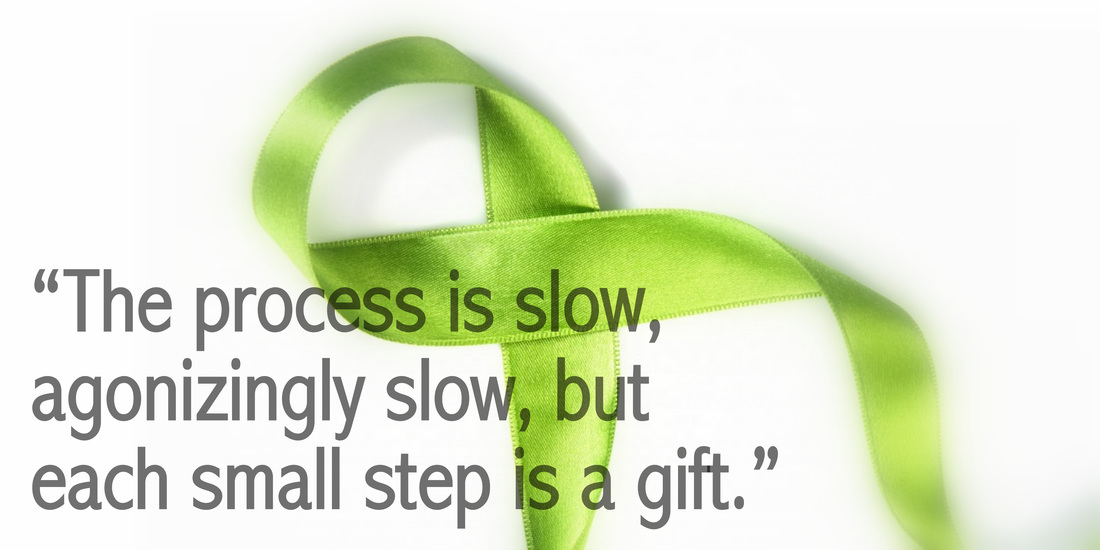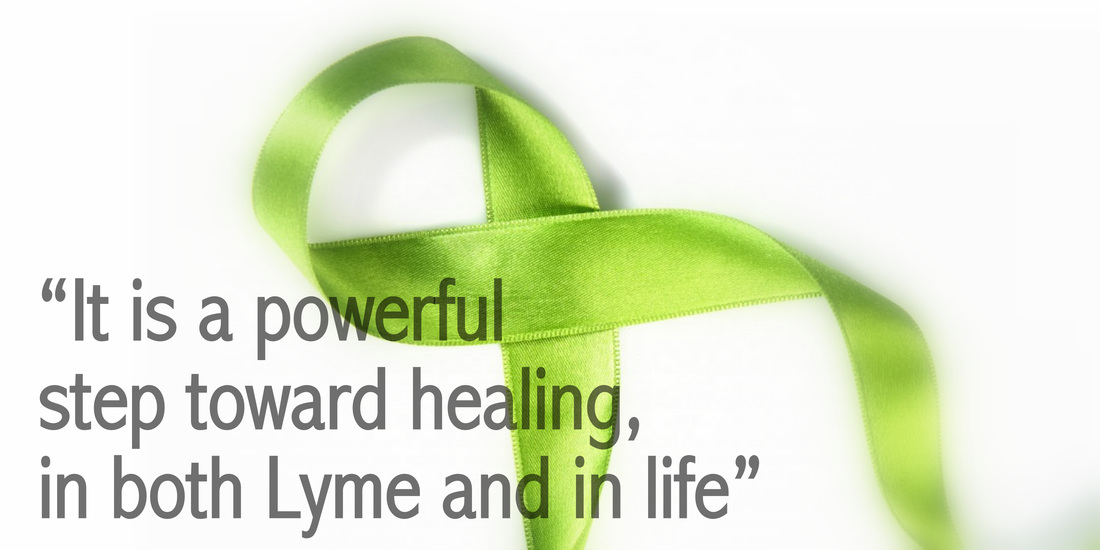|
Join me on Lyme Light Radio this Wednesday (4/22/15) for a cutting edge discussion on healing with Cannabis. My guest, Constance Finley, an expert in blending Cannabis oils for health and healing, will educate us about the different uses.
Constance Finley is the founder and CEO of Constance Pure Botanical Extracts - a medicinal cannabis collective that manufactures and distributes what is broadly recognized as the highest quality cannabis extracts made today. Trained as a clinical psychologist, she taught Jungian Psychology and worked as a child and family therapist. She switched course to secure extensive graduate training in tax, accounting and finance. She managed money for wealthy individuals and then founded a company pioneering the use of tax credits to house the working poor from corporate equity investments. At 44, a severe and life long autoimmune condition brought Constance’s career to a halt. After ten years of being housebound and incorrectly diagnosed, she found incremental relief through vaporizing cannabis. That led her to found the collective that is Constance Pure Botanical Extracts in 2008. Her original vision of an old-fashioned herbal apothecary is realized in CPBE’s multiple strains of both THC and CBD cannabis extracts. The company is a pioneer in improving and professionalizing the extraction of standardized cannabis oil from multiple and consistently available strains. CPBE’s formally trained staff coach and support patients who are primarily referred by oncologists, rheumatologists, neurologists and other health practitioners. A leader in the medicinal cannabis therapeutics industry, Finley and her collective increases access and education to those in need of the highest quality cannabis therapeutics. Please join me Wednesday April 22 at 1 PM PDT/4 PM EDT Blessings, Mara
7 Comments
 The Infectious Disease Society of America (IDSA) and the International Lyme and Associated Diseases Society (ILADS) have very different guidelines for the treatment of Lyme disease. An article recently posted in the Huffington Post entitled "Lyme Disease Myths: 9 Things You should Know About The Tick-Borne Disease" follows the IDSA treatment guidelines, which are misleading. As a result, many people are not given the correct diagnosis, treatment, or recognition and are severely impacted for the rest of their lives. Lyme disease is real and prevalent. The ILADS treatment guidelines treats for both Lyme disease and considers chronic Lyme disease a very difficult group of infections to eradicate. They believe in using antibiotics over the long term along with different nutritional supplements, which the IDSA disagrees with in every aspect. Unfortunately, for the consumer, this controversy can mean the difference between health and years of chronic illness and suffering. I encourage everyone to discern for themselves which group to follow, to dig deeper, and to study all the information out there. Education is the key to stopping this widespread epidemic. Below you will find the corrections to each "myth". I have kept the word "myth" because that is how the Lyme subjects are described in the article. Myth: All Ticks Carry Lyme Disease HP Article: There are a number of types of ticks, but only blacklegged ticks (commonly called deer ticks) carry the bacterium that causes Lyme disease, according to the Centers for Disease Control and Prevention (CDC). Lone star ticks, the American dog tick, the Rocky Mountain wood tick and the brown dog tick do not transmit the disease. The Reality: The deer tick is not the only type of tick to carry Lyme disease and other co-infections. All types of insects carry Lyme, including all types of ticks, Mosquito's and fleas. The CDC criteria that defines Lyme disease misses 90% of infections. Myth: All Deer Tick Bites Result In Lyme Disease HP Article: First of all, not all deer ticks are infected with the Lyme disease bacterium. "In areas where [Lyme disease] is very common, one out of every four or five ticks might be infected," says Paul Mead, M.D., MPH, chief of epidemiology and surveillance activity at the CDC. "In other areas where it's much rarer, that may be more like one in 100." Second, if a tick is removed within 24 hours of biting, risk of infection drops dramatically. "It's important to take a definitive step quickly," says Mead. "If you look for ticks every day and -- [if you] find them -- remove them, you aren't likely to get Lyme disease." The Reality: To report that Lyme is rare in other parts of the world besides the N.E. portion of the U.S. is a fallacy. Lyme is now found worldwide, they have even found ticks in Antartica with Lyme. It is common in every state in the nation. In ticks sweeps last year about 90% were infected in the N.E. and 40-50% in Northern California. Secondly, it has been documented by Lyme Literate providers that infection can occur in less than 2 hours. Remember that Lyme disease is carried in the tick's saliva so that as soon as the ticks bites and embeds it can potentially infect a person. Myth: The Best Way To Remove A Tick Is To Burn It HP Article: Folk remedies like burning the tick off of your skin or suffocating it with nail polish just prolong the window of time for that bugger to infect you. Instead, use tweezers to remove the offending insect as quickly as possible. Mead explains that the CDC recommends grasping the tick with the tweezers as close to the skin as possible, then pulling upward without twisting. Be sure to clean the area after -- and your hands! The Reality: This advise is correct. Be especially careful to get the head out, and careful to avoid squeezing the body of the tick as that is the way co-infections are injected into the body. Lyme is found in the saliva of the tick so completely removing the head is very important in stopping more transmission of infection. Myth: You Only Have Lyme Disease If You Have The Telltale Bull's Eye Rash HP Article: While it is a very common sign of Lyme disease, and perhaps the most obvious one, not everyone develops the characteristic rash. It shows up in about 80 to 90 percent of people, according to the American Lyme Disease Foundation (ALDF), and usually appears as a red blotch with a red ring emanating from the site of the tick bite. It may be warm to the touch but usually isn't itchy or painful. If you've been bitten by a tick and notice other possible symptoms, like fevers, headaches and muscle pain, consult a doctor as soon as possible. However, it's not unheard of for someone not to develop the rash -- or to simply not see it, according to Mead, especially if it's somewhere hidden like the scalp. "The symptoms sound like flu symptoms, but they occur in the late spring and early summer," Mead says. "If you get those symptoms and live in an area where Lyme disease is common, you may want to consider that possibility." The longer Lyme disease goes undiagnosed and, therefore, untreated, the more severe the symptoms can become. Untreated infection can cause a paralysis to facial muscles called Bell's palsy, irregular heartbeats, arthritis and short-term memory problems, says Mead. The Reality: The Bull's Eye rash is seen as little as 20 percent of the time. If you see the rash you do have Lyme. It is diagnostic. Any flu like symptoms, joint pain, or nerve changes like burning or drooping are signs of Lyme. Myth: There Is No Cure For Lyme Disease HP Article: When treated with antibiotics in the early stages of the disease, Lyme disappears in almost all people -- and quickly, too. But in a small number of people, symptoms like muscle and joint pain or memory problems persist. Researchers are currently trying to determine how long a person should be treated with antibiotics in these instances of what is sometimes referred to as "chronic lyme disease," according to the National Institutes of Health. Experts don't know the exact cause of this cluster of lingering symptoms, more properly called post-treatment Lyme disease syndrome, Mead explains. There is ongoing debate among experts as to whether or not ongoing symptoms reflect continuing infection or "whether it is a post-infectious complication," he says. Imagine, he explains, a person who has broken his leg. If it doesn't heal right, it's not that it's still broken, but it may continue to cause pain or weakness. So too might a prior Lyme infection cause continuing discomfort. Studies have shown, however, that further treatment with antibiotics has no benefit -- and can be harmful. The Reality: If it is an acute infection and is immediately treated with 6-8 weeks of antibiotics, the chronic form can usually be prevented. If you have symptoms then taking antibiotics until all symptoms are gone should be considered. The disconnect between the two groups who talk about and treat Lyme disease is huge. The Lyme-literate group disagrees with the post Lyme syndrome diagnosis, and believes Chronic Lyme is an active infection that includes multiple infectious agents, and that antibiotics and other supplements are necessary to heal from it. There are many studies that prove the persistence of Lyme and other co- infections. The longer a person goes untreated the more difficult it is to recover. Lyme does not resolve on it's own. It can change form and lie dormant in the body until something triggers infection, like another tick bite. Myth: A Blood Test Is The Best Way To Diagnose Lyme Disease HP Article: It depends on how long after a tick bite we're talking about, says Mead. "The most widely-used test for Lyme disease doesn't test for the organism itself, but for antibodies that your immune system makes," he says. "When you are first infected, your body hasn't had time to make those antibodies, and you can test negative in the early stages of the disease." If, however, someone has been infected for months or even years without knowing it, -- say they go to a doctor for symptoms of arthritis and don't even recall having a summer fever the year before -- "then the test is quite good for detecting infection," he says. The Reality: Most testing for Lyme disease is poor with many false negatives.The only reliable test for Lyme is from Advance Labs. It is a culture and costs $600.00. The other tests are not reliable and do not rule out Lyme with a negative test. Igenex Lab in California also has more reliable testing than most national labs. The state of Virginia now mandates that providers inform patients of this fact. Myth: You Can Get Lyme Disease Everywhere In The U.S. HP Article: More than 97 percent of all cases of Lyme disease occur in the northeastern and north-central parts of the country, says Mead. Your chances of being bitten by an infected tick outside of those regions are very small. While there have indeed been reported cases in nearly all 50 states, Lyme disease is reported by state of residence, not necessarily the state of infection. A child from Wyoming who spends the summer in Pennsylvania with Grandma and comes down with Lyme disease will count as a reported case for Wyoming, says Mead, even though her chances of getting Lyme in her homestate are tiny. The Reality: It is true that you can get Lyme anywhere in the U.S. and other places. It is found worldwide. It is a fallacy to say that 97% of all infections occur in the NE of the US. Lyme is in every state in the country. A study done by U.C. Berkeley in the early 90's proved the existence of Lyme, Babesia, and Erhlichia in Sonoma Valley in California. Myth: Lyme Disease Can Spread Between People HP Article: From time to time you do see a husband and a wife, for example, who both come down with Lyme disease around the same time, says Mead, but there's no solid evidence to support the idea that one of them passed it to the other. It's much more likely that they were both bitten by ticks, especially since young ticks can be so small, he says. The Reality: Lyme and other co-infections can be transmitted sexually; through blood by organ donation and blood transfusion; through the placenta to a fetus; and through breast feeding. This has been documented in studies. The CDC is concerned about the transmission of Babesia and Ehrlichia in the blood supply, but still does not test for Lyme. Myth: You Can Get Lyme Disease From A Pet HP Article: Fido and Fluffy can get Lyme disease, but there is no evidence to suggest pets can spread the disease to humans. However, "pets are important vehicles for ticks to get into the household and come into contact with humans," Mead says. Pet owners may want to consider tick control powders, sprays, collars or other products for their furry friends. The Reality: Your pets can carry the tick into your home, crawl on you and bite. Make sure to always check your pet for ticks after walks, hikes, or after being in any area a tick could catch a ride. Most products do not prevent the tick from grabbing on, only from biting. Additionally, if your cat or other pet scratches or bites you and is infected, it can transmit that infection to you. It is so important to become informed about the epidemic of Lyme disease. Go to Lymedisease.org and ILADS.org for more information. To ensure you completely recover see a Lyme-literate provider. It could make all the difference in your life. Blessings, Mara  As a Lyme literate practitioner and as a mother of someone with Chronic Lyme Disease, I want to share some insights I have gained in the last two years. Amanda has had active disease since she was 15. She is now 40. We have been treating her for four years. Before I became Lyme literate I was like any other family member frustrated by the incredible variety of symptoms Amanda complained about. I kept telling her to get help for her emotional issues and to get on with her life. As a 'knowledgeable' health care provider I just couldn't put the array of problems together into a diagnosis that made sense. Amanda would sometimes rage, literally, with anger that was scary. She would get panic attacks and these increased in intensity and frequency as the bugs became further entrenched in her body. Antidepressants were ineffective. Amanda would complain of severe pain, total body pain, joint pain that would migrate, hip pain that made her feel like her bones were breaking, muscle pain, stomach pain, abdominal cramping, and headaches. Wow! It was overwhelming to hear about this and feel helpless to help. She has had horrific stomach issues and would throw up often and feel nauseous constantly. I attributed these symptoms to her inability to resolve her emotional feelings. Yet I believed she needed psych help to get over the pain, that these symptoms were related to the trauma of the rape she experienced at a young age. For many of her family members it was Amanda crying wolf over and over again. Her emotional lability pushed people away as did her rage. I was the person the rage was directed at mostly and eventually I just wanted to disengage from it all. I did not make the connection of Lyme until I became Lyme literate and then everything she had been saying for years made sense. Initially, I felt guilt for not believing her and helping her to find help. Fortunately we have so much guidance now. But when we had to interact with the current health care system, I thought that because I was 'one of them' they would believe what she was experiencing, listen, and help. I was foolish to believe this. The disconnect between IDSA guidelines and ILADS guidelines rang loud and clear. I became the drug seeking, interfering mother and my gravely ill daughter became a psych case. Amanda lived about a mile from us at the beginning of treatment. As I have written before we had a hellish year of 17 ER visits and 7 inpatient hospitalizations before I took her home and started treating her. My husband and I give her medicine every four hours around the clock and have for over 6 months now. She gets IV hydration, nutritional support and antibiotics. We prepare her food, do her laundry, help her with personal care, and are helping to raise her 12 year old daughter. In-between all this we work and make time for our relationship. Hundreds of thousands, probably millions, are doing this across the globe. Imagine the impact this is having on the global economy, as well as the emotional costs for those involved. The financial costs of treating CLD physically run into thousands of dollars a year and can go on for several years. People lose their homes, their jobs, their relationships. Insurance companies refuse to pay for something that 'doesn't exist.' The burden of this is great and those that have no resources suffer for years. Many simply give up. For those with the disease, healing on all levels is necessary. This encompasses not only the physical but the emotional and spiritual. The disease is a message to change the way they have been living their life. As Katina states so eloquently in her book, Out of the Woods, " The more debilitated and stricken people are, the more time has been created in their lives for reflection and realignment with their life dreams and purpose. It's not random that those who have the most to offer the world-those who are working hardest and have the most altruistic attitudes- can get hit the hardest by this illness as they push themselves so hard, with little self-recognition. We must learn how to love our very selves with true compassion, through the tender and tragic mercies of this insidious and erratic illness". This aspect of CLD is as critical to address as the physical. The infections will not resolve without doing this work. I believe this applies to those of us that care for their loved one as well. It is a consuming experience that requires surrender to each moment to avoid burnout that can come with care-giving. The rhythm of each day is dictated by the needs of one person and it can be overwhelming. Some family members walk away when they decide they have done enough. Many choose to believe the mainstream hype that CLD doesn't exist. But for those of us that are able to remain steadfast, hold love in their heart, the reward of watching health restored is amazing. It is worth every moment of exhaustion and frustration. I get to assist someone I adore in her transformation; and, like a butterfly coming out of her cocoon, I am witnessing my child coming back to life. The process is slow, agonizingly slow, but each small step is a gift. One of my mantras is 'God gives nothing but good, either gifts or lessons, and really, they are the same.' Another is 'everything is perfectly manifesting.' This reminds me to embrace the moment and learn so that I can shift my consciousness ever higher, and return to a place of peace and acceptance. Those who are desperately ill with CLD need their loved ones to be present and whole. Like the birthing of a child, a woman is alone with her experience of labor, yet she needs support while going through it. So does someone who is chronically ill, frail, weak, exhausted, and in severe pain. My daughter, who is so ill, is the same being she was before she became sick, working to heal from an all consuming disease, and she needs all the assistance we can give. I will be here until her healing happens and she can move forward in her life once again. Blessings, Mara  I continue reading comments from numerous people with Lyme, expressing their rage and hopelessness about their illness and the marginalization by the current system that denies Lyme exists. Being caught in the place of anger and fear is a stuck place. A large part of recovering from Lyme is understanding that this illness requires your complete attention in every aspect of your being. Energetically, to remain in rage and despair can stall recovery. It does not matter how many antibiotics, herbals or other medicines you take, in my professional experience, rage will slow your healing. Lyme is an excellent microcosm, a perfect example, of the world today. We are all being asked to expand our awareness, to become more conscious of our surroundings and how we interact in each moment, to help ourselves and each other grow and heal, whether we have Lyme or not. With Lyme I feel this is a necessity. Denial will keep you from healing and recovering. Begin by asking yourself what trauma(s) have you suffered in your life? What can you do to forgive and move past the trauma? Recently, I was speaking with one of the MD's I work with. We were talking about treating newly activated Lyme and he suggested adding a second or third antibiotic if there was trauma as part of the history of the patient. What can you surrender that no longer serves you? What habits prevent a return to health? We all have our favorite foods. I’m not suggesting total abstinence of comfort food and drinks, although I do ask that you consider moderation more than indulgence. Are you addicted to sugar? Lyme feeds on sugar and yeast. Does gluten make you feel bloated or gassy after eating it? Dairy? Soy? All of these foods are inflammatory. Do you smoke cigarettes? What is holding you back that you have the power to change? I have seen people quickly move to recovery once they completely integrate healing in all aspects of their mind, body and spirit. No one asks to get Lyme. It is a terrible illness that undermines your life and those of your loved ones. I live this every day with my daughter, so this is not only a professional take on healing but a personal one as well. I recommend you gently and kindly look in the mirror and see what it is you need to resolve so that you can move forward into recovery. It is a powerful step toward your own healing for both Lyme and in life. Blessings, Mara  People with Chronic Lyme Disease feel terrible. Imagine feeling exhausted most of the time, having no energy. You hurt everywhere, especially in your joints. The pain can be severe. You may be nauseous every waking minute and eating takes effort. Brain fog is persistent, and you cannot concentrate. Headaches are a daily occurrence, with light and sound sensitivity that drives you away from people and into your home. Depression is pervasive, and sometimes ideas of suicide enter your thoughts. Neurological symptoms, such as tingling and numbness, and electrical, painful shocks travel up your arms and legs, coming and going. It is hard to get out of bed in the morning and function in daily life activities. Besides feeling terrible and having to struggle to get from place to place, you go to one doctor after another who tells you there is nothing wrong because all the test results are negative. Then you are offered an antidepressant because it must be all in your head. Unfortunately these are bacterial and parasitic infections affecting different parts of the body, antidepressants are usually infective. Later you are sent to a specialist, a rheumatologist or an infectious disease specialist, and they again do testing which is negative; therefore, again it is believed you don't have any disease. Instead of looking at the clinical picture being presented to them, these physicians say there is nothing wrong. It is implied that it is all in your head. Over and over again, this scenario plays out until you feel like you are going crazy. Family members look at you like you're going insane, and your loved ones begin to turn away from you. However, you remain caught in this horrible cycle of feeling terrible, not able to function on a daily basis, and in pain most of the time. It is devastating in every which way *Physically, Emotionally, Spiritually, Mentally, and Financially. The emotional cost to a patient and their families is horrendous. How does an ill person participate in life? People with CLD are dependent on family and friends to take care of them, to prepare food for them, to do errands, to pick up their medicines, to call the doctor and arrange for appointments, to help with their children, if they have any. *Basically any activity healthy people take for granted. Since insurance will not pay for a problem that does not exist, the costs are extremely high. Not only must you pay for a health insurance policy and the attendant co-pays that go with it, you go to doctors who say nothing is wrong. Then you seek out, if you are lucky to find one, a Lyme-Literate provider who does not take your insurance. Most Lyme specialists have cash practices because they could not stay in business otherwise. It takes one to two hours in an initial visit to tease out the problems and begin to address them. At your primary doctor's office, you pay your co-pay, the doctor bills your insurance the remainder, and this doctor only spends five to ten minutes with you. How can anyone know what is going on in such a short period of time? It is not possible. Your story, your symptoms, how you live on a daily basis are important in diagnosing your illness and deciding on the first step in treatment. It is time for something new. There are many differences between the way Western health care and Eastern health care deal with Lyme Disease and other co-infections. While most of the providers who practice in our current system fail to acknowledge CLD, it is often an acupuncturist or naturopathic physician that suggests the possibility of CLD to a person and gets them to begin looking for other providers who understand what they might be going through. In an integrative practice, the best of both worlds are utilized in a blended way by using herbals, neutraceuticals, and antibiotics. Using nutrients and herbals, instead of drugs, can control many chronic conditions, as they have fewer side effects and are accepted by the body more readily. There are herbal tinctures specific to the treatment of Lyme and the co-infections that work well in combination with antibiotics. A well as other supplements utilized to help the body clear toxins from the bugs and support the lymph and liver system. As a knowledgable health care provider and Lyme Literate, I find it incomprehensible that the current medical system shuns and marginalizes people with CLD. The suffering this disease can cause exemplifies this wrong and shows the need for a place those with CLD can find Solace, Support, and Respect, as well as treatment that moves them toward a healing state. Blessings, Mara |
Mara WilliamsUnderstanding Complex Chronic Illness. Help with Tick-Borne Disease, Biotoxin Illness, Hormone Imbalance using Integrative Therapies. Listen to Archived Lyme Light Radio Shows BelowBlog Archives
January 2017
Categories
All
|
|
Contact
707.337.5922 |

 RSS Feed
RSS Feed